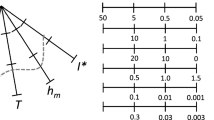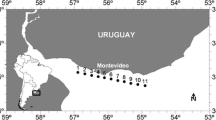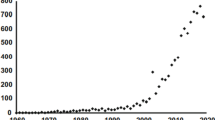Abstract
A morphofunctional traits approach has been adopted to identify how environmental factors shape the phytoplankton community. This approach has been applied in two rivers where hydrodynamical conditions are expected to be the main factor acting on the phytoplankton community. Hence, morphological traits (motility, shape, size, mucilage, and silica) related to sedimentation resistance have been chosen. We have shown that differences in flow regulation through differences in flow velocities induce shifts in phytoplankton community. These shifts depend mostly on shape, buoyancy regulation, and motility of phytoplankton cells. Elongated shapes are the characteristic of unregulated sites with high flow velocities, while cells able to regulate actively their position or to reduce their density (mucilaginous colonies) are found in regulated sites with low flow velocities. Flattened shapes are also the characteristic of sites with rather low flow velocities. These results highlight the key role of flow velocity as a driving factor controlling the structure of phytoplankton community. In this study, flow velocity also structures phytoplankton community according to location rather than seasonality.






Similar content being viewed by others
References
Abonyi A, Leitão M, Lançon AM, Padisák J (2012) Phytoplankton functional groups as indicators of human impacts along the River Loire (France). Hydrobiologia 698:233–249
Barnes H, Folkard AR (1951) The determination of nitrite. Analyst 76:599–603
Barton AD, Pershing AJ, Litchman E, Record NR, Edwards KF, Finkel Z, Kiørboe T, Ward B (2013) The biogeography of marine plankton traits. Ecol Lett 16:522–534
Becker V, Huszar VLM, Naselli-Flores L, Padisák J (2008) Phytoplankton equilibrium phases during thermal stratification in a deep subtropical water supply reservoir. Freshwater Biol 53:952–963
Bormans M, Condie SA (1998) Modelling the distribution of Anabaena and Melosira in a stratified river weir pool. Hydrobiologia 364:3–13
Bovo-Scomparin VM, Train S, Rodrigues LC (2013) Influence of reservoirs on phytoplankton dispersion and functional traits: a case study in the Upper Paraná River, Brazil. Hydrobiologia 702:115–127
Centis B, Tolotti B, Salmaso N (2010) Structure of the Diatom community of the River Adige (North-Eastern Italy) along a hydrological gradient. Hydrobiologia 639:37–42
Chételat J, Pick F, Hamilton PB (2006) Potamoplankton size structure and taxonomic composition: influence of river size and nutrients concentrations. Limnol Oceanogr 51:681–689
Condie SA, Bormans M (1997) The influence of density stratification on particle settling, dispersion and population growth. J Theor Biol 187:65–75
Descy JP, Gosselain V (1994) Development and ecological importance of phytoplankton in a large lowland river (River Meuse, Belgium). Hydrobiologia 289:139–155
Devercelli M (2010) Changes in phytoplankton morphofunctional groups induced by extreme hydroclimatic events in the Middle Paraná River (Argentina). Hydrobiologia 639:5–19
Dokulil MT (1994) Environmental control of phytoplankton productivity in turbulent turbid systems. Hydrobiologia 289:65–72
Dray S, Dufour AB (2007) The ade4 package: implementing the duality diagram for ecologists. J Stat Softw 22:1–20
Edwards KF, Thomas MK, Klausmeier CA, Litchman E (2012) Allometric scaling and taxonomic variation in nutrient utilization traits and maximum growth rate of phytoplankton. Limnol Oceanogr 57:554–566
Finkel Z, Irwin AJ, Schofield O (2004) Resource limitation alters the 3/4 size scaling of metabolic rates in phytoplankton. Mar Ecol Prog Ser 273:269–279
Gurbuz H, Kivrak E, Soyupak S, Yerli SV (2003) Predicting dominant phytoplankton quantities in a reservoir by using neural networks. Hydrobiologia 504:133–141
Hillebrand H, Dürselen CD, Kirschtel D, Pollingher U, Zohary T (1999) Biovolume calculation for pelagic and benthic microalgae. J Phycol 35:403–424
Huisman J, Arrayás M, Ebert U, Sommeijer B (2002) How do sinking phytoplankton species manage to persist? Am Nat 159:245–254
Jones RI (1988) Vertical distribution and diel migration of flagellated phytoplankton in a small humic lake. Hydrobiologia 161:75–87
Jowett IG (1993) A method for objectively identifying pool, run, and riffle habitats from physical measurements. N Zeal J Mar Fresh 27:241–248
Karp-Boss L, Boss E, Jumars PA (1996) Nutrient fluxes to planktonic osmotrophs in the presence of fluid motion. Oceanogr Mar Biol 34:71–107
Kruk C, Huszar VLM, Peeters ETHM, Bonilla S, Costa L, Lürling M, Reynolds CS, Scheffer M (2010) A morphological classification capturing functional variation in phytoplankton. Freshwater Biol 55:614–627
Kruk C, Peeters ETHM, Van Nes EH, Huzar VLM, Costa L, Scheffer M (2011) Phytoplankton community composition can be predicted best in terms of morphological groups. Limnol Oceanogr 56:110–118
Lagadeuc Y, Boulé M, Dodson JJ (1997) Effect of vertical mixing on the vertical distribution of copepods in coastal waters. J Plankton Res 19:1183–1204
Legendre P, Legendre L (1998) Numerical ecology, second english edition. Elsevier Scientific Publishing Company, Amsterdam
Litchman E, Klausmeier CA (2008) Trait-based community ecology of phytoplankton. Ann Rev Ecol Evol Syst 39:615–639
Litchman E, Klausmeier CA, Schofield OM, Falkowski PG (2007) The role of functional traits and trade-offs in structuring phytoplankton communities: scaling from cellular to ecosystem level. Ecol Lett 10:1170–1181
Longhi ML, Beisner BE (2010) Patterns in taxonomic and functional diversity of lake phytoplankton. Freshwater Biol 55:1349–1366
Lorenzen C (1967) Determination of chlorophyll and pheo-pigments: spectrophotometric equations. Limnol Oceanogr 12:343–346
Lund JWG, Kipling C, Le Cren ED (1958) The inverted microscope method of estimating algal numbers and the statistical basis of estimations by counting. Hydrobiologia 11:143–170
McGill BJ, Enquist BJ, Weiher E (2006) Rebuilding community ecology from functional traits. Trends Ecol Evol 21:178–185
Mieleitner J, Borsuk M, Bürgi HR, Reichert P (2008) Identifying functional groups of phytoplankton using data from three lakes of different trophic state. Aquat Sci 70:30–46
Murphy J, Riley JP (1962) A modified single-solution for the determination of phosphate in natural waters. Anal Chimi Acta 27:31–36
Oksanen J, Blanchet FG, Kindt R, Legendre P, O’Hara RB, Simpson GL, Solymos P, Stevens MHH, Wagner H (2010) Vegan: community ecology package. R package version 1.17-2. http://CRAN.R-project.org/package=vegan
Padisák J, Soróczki-Pintér E, Rezner Z (2003) Sinking properties of some phytoplankton shapes and the relation of form resistance to morphological diversity of plankton–an experimental study. Hydrobiologia 500:243–257
Padisák J, Crossetti LO, Naselli-Flores L (2009) Use and misuse in the application of the phytoplankton functional classification: a critical review with updates. Hydrobiologia 621:1–19
Pannard A, Bormans M, Lagadeuc Y (2007) Short-term variability in physical forcing in temperate reservoirs: effects on phytoplankton dynamics and sedimentary fluxes. Freshwater Biol 52:12–27
R Development Core Team (2010) R: a language and environment for statistical computing. R Foundation for Statistical Computing, Vienna. http://www.R-project.org/
Reynolds CS (1980) Phytoplankton assemblages and their periodicity in stratifying lake systems. Holarctic Ecol 3:141–159
Reynolds CS (1994) The long, the short and the stalled: on the attributes of phytoplankton selected by physical mixing in lakes and rivers. Hydrobiologia 289:9–21
Reynolds CS (2006) Ecology of phytoplankton. Cambridge University Press, Cambridge
Reynolds CS (2007) Variability in the provision and function of mucilage in phytoplankton: facultative response to the environment. Hydrobiologia 578:37–45
Reynolds CS, Descy JP (1996) The production, biomass and structure of phytoplankton in large rivers. Arch Hydrobiol Supp 113:161–187
Reynolds CS, Huszar VLM, Kruk C, Naselli-Flores L, Melo S (2002) Towards a functional classification of the freshwater phytoplankton. J Plankton Res 24:417–428
Salmaso N, Padisák J (2007) Morpho-functional groups and phytoplankton development in two deep lakes (Lake Garda, Italy and Lake Stechlin, Germany). Hydrobiologia 578:97–112
Salmaso N, Zignin A (2010) At the extreme of physical gradients: phytoplankton in highly flushed, large rivers. Hydrobiologia 639:21–36
Schwaderer AS, Yoshiyama K, Pinto PT, Swenson NG, Klausmeier CA, Litchman E (2011) Eco-evolutionary differences in light utilization traits and distributions of freshwater phytoplankton. Limnol Oceanogr 56:589–598
Sherman BS, Webster IT, Jones GJ, Oliver RD (1998) Transitions between Aulacoseira and Anabaena dominance in a turbid river Weir pool. Limnol Oceanogr 43:1902–1915
Sommer U (1996) Plankton ecology: the past two decades of progress. Naturwissenschaften 83:293–301
Stankovic I, Vlahović T, Udovič MG, Várbíró G, Borics G (2012) Phytoplankton functional and morphofunctional approach in large foodplain rivers. Hydrobiologia 698:217–231
Stevenson RJ, White KD (1995) A comparison of natural and human determinants of phytoplankton communities in the Kentucky River basin, USA. Hydrobiologia 297:201–216
Sun J, Liu D (2003) Geometric models for calculating cell biovolume and surface area for phytoplankton. J Plankton Res 25:1331–1346
Tam D, Hosoi AE (2011) Optimal feeding and swimming gaits of biflagellated organisms. Proc Natl Acad Sci 108:1001–1006
Tambi H, Flaten GAF, Egge JK, Bodtker G, Jacobsen A, Thingstad TF (2009) Relationship between phosphate affinities and cell size and shape in various bacteria and phytoplankton. Aquat Microb Ecol 57:311–320
Tavernini S, Pierobon E, Viaroli P (2011) Physical factors and reactive silica affect phytoplankton community structure and dynamics in a lowland eutrophic river (Po river, Italy). Hydrobiologia 669:213–225
Vannote RLG, Minshall W, Cumins KW, Sedell JR, Cushing CE (1980) The River continuum concept. Can J Fish Aquat Sci 37:130–137
Violle C, Navas ML, Vile D, Kazakou E, Fortunel C, Hummel I, Garnier E (2007) Let the concept of trait be functional! Oikos 116:882–892
Weithoff G (2003) The concepts of ‘plant functional types’ and ‘functional diversity’ in lake phytoplankton-a new understanding of phytoplankton ecology. Freshwater Biol 48:1669–1675
Zhang M, Shi X, Yu Y, Kong F (2011) The acclimative changes in photochemistry after colony formation of the cyanobacteria Microcystisaeruginosa. J Phycol 47:524–532
Acknowledgments
This work was supported by a grant from CNRS and Veolia Environment to Stéphane Fraisse. The authors thank Guillaume Bouger, Enora Briand, and Philippe Louâpre for their great help during sampling periods, and Marie-Paule Briand and Nathalie Josselin-Lebris for physicochemical analyses done in ABGC center in ECOBIO. Help for species identification was provided by Luc Brient, Katia Pobis, and Frédéric Rimet. The authors also thank the three referees for their fruitful corrections.
Author information
Authors and Affiliations
Corresponding author
Additional information
Handling Editor: Bas W. Ibelings.
Rights and permissions
About this article
Cite this article
Fraisse, S., Bormans, M. & Lagadeuc, Y. Morphofunctional traits reflect differences in phytoplankton community between rivers of contrasting flow regime. Aquat Ecol 47, 315–327 (2013). https://doi.org/10.1007/s10452-013-9446-z
Received:
Accepted:
Published:
Issue Date:
DOI: https://doi.org/10.1007/s10452-013-9446-z




